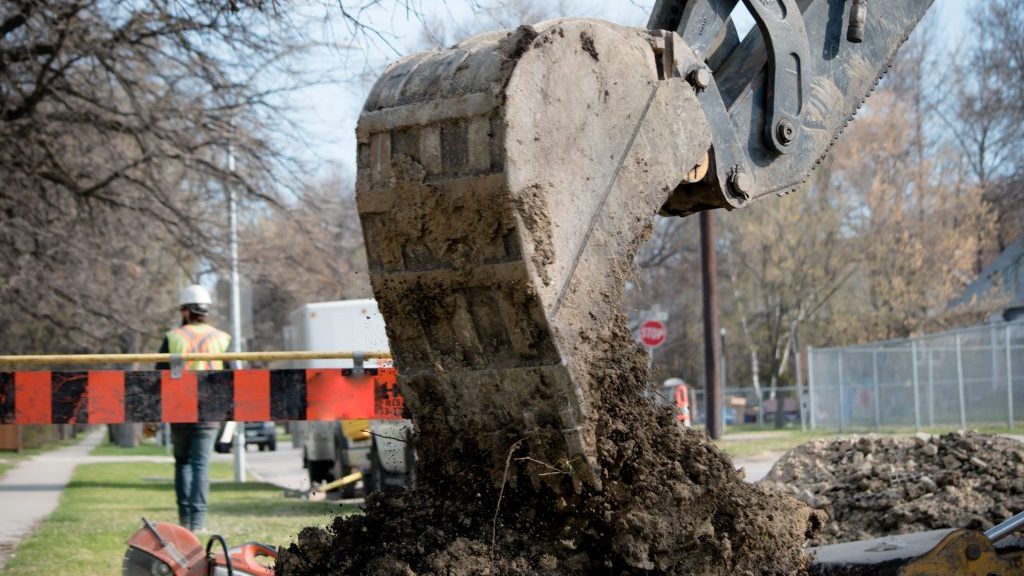The implementation of Ontario’s new excess soil regulation has been delayed until January 2021, to the relief of some stakeholders who state it will give them extra time to strategize on how to deal with excess soil generated on construction projects.
Early planning will be key, they agreed.
The province’s Ministry of Environment, Conservation and Parks released the On-Site and Excess Soil Management regulation in December. Recently, the Urban Land Institute Toronto hosted a webinar entitled Ontario’s New Excess Soil Regulation and What it Means for You.
The regulatory changes related to the management of excess construction soil and redevelopment of brownfield sites are anticipated to reduce soil management costs and promote brownfield redevelopment while taking into account human health and the environment, such as greenhouse gas emissions associated with transportation of the soils, states the regulation.
It also clarifies the project leader is responsible for managing and relocating excess soil in order to ensure it is properly characterized and relocated to an appropriate reuse site.
Melissa Walker, director of development with Kilmer Brownfield Management Limited, said many in the industry were not prepared for the regulation to come into effect on the original date of July 1.
“We’re hearing from industry contacts there was this relief with the regulation being delayed,” Walker explained. “That might be a warning that it will take time to adjust to the new regulation. It really starts with project planning right now.
“You can’t just flip a switch to be able to comply with that in a day.”
She said it’s essential to plan in advance, so everyone is prepared when it does come into effect.
“On a site that we have, we were ready to accept a significant volume of clean soil and we weren’t able to find source sites that had completed the adequate testing,” said Walker. “There is time now for the industry to start turning their minds to that.”
Those who choose not to do the source site testing work until the day it’s required by regulation might find there are few receiving sites willing to accept their excess soil, Walker added.
“Those who want to benefit from the reduced soil disposal cost will be diligent and start complying before the required date,” Walker explained. “In general, we’re anticipating that could be in the order of one per cent of your construction costs, so certainly there is a cost to comply. You want to start factoring that in early on in your project.”
The timing for the planning is going to be critical, added Dylan Hemmings, vice-president of environmental services with Stantec.
“Planning takes weeks, sometimes months. To come up with solutions like that is going to take a while for a team to do,” he noted. “Do this early on because otherwise it’s going to end up costing the project and potentially delaying as well.
“As project owners, if you do the planning requirements early and help quantify all of those units of soil that you need to manage, dispose, reuse, that’s going to make a tighter bid. That’s going to help improve your project schedule and delivery and help reduce the risk on your project.”
Prasoon Adhikari, an environmental engineer with the City of Guelph, spoke about the city’s challenges functioning as a regulator under the new regulation as well as a soil generator or project leader.
“The first thing we would likely be doing would be to update our site alterations bylaw. It seems easy on the surface but it’s a very lengthy process,” he said, adding someone will need to craft it and it will need to go to other city departments, such as the legal department and council for approval.
“We want to make sure that we are ready to implement this regulation from a generator and receiver standpoint. We are looking into updating our contract languages, our specifications.”
The new regulation includes planning requirements that establish prescriptive sampling and documentation requirements that need to be met to confirm that soil quality does actually meet the standards applicable to the reuse site, explained moderator Krista Barfoot, principal of environmental services at Stantec. This is where additional costs come into play.
Although there are no exemptions to the regulation as a whole, there are some exemptions to the planning requirements, for example, with respect to infrastructure projects.
“It’s great from my perspective that infrastructure projects are being treated differently,” said Hemmings. “It allows for a little flexibility, helps contain the costs associated with some of these exemptions.
“What I am hearing from industry is that it is going to take a while to absorb these changes and incorporate them into the project planning stage,” he added. “We are not there yet. We are getting there. It’s going to be even more important to understand the exemptions. Just because you are exempt from the planning requirements doesn’t absolve you from the responsibilities of the regulation.”
Every site is going to be approached differently, he said.
“It’s going to be very difficult to find a one size solution to fit these infrastructure projects moving forward in Ontario given the size and complexity of what they could look like and the geography as well.”
Follow the author on Twitter @DCN_Angela.











Recent Comments